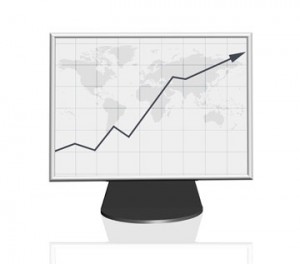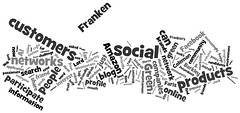Professional Website Design: Is It Worth The Investment?
 For a small business, every dollar counts. You think long and hard before you spend – and that’s the way it should be. But while there are certainly many unnecessary expenses that you should avoid, or cut from your budget, professional Web design is not one of them. Here are the reasons:
For a small business, every dollar counts. You think long and hard before you spend – and that’s the way it should be. But while there are certainly many unnecessary expenses that you should avoid, or cut from your budget, professional Web design is not one of them. Here are the reasons:
You Need A Strong Online Identity
As a long-term strategy, you want to separate yourself from the crowd and have your own online identity. You should have a unique logo, a unique website, and unique business cards. If you use do-it-yourself Web design templates, you may be saving money in the short term, but you are hurting your business’ chances of leaving an impression. Don’t let your business look just like thousands of other businesses. The right design can make the difference between a struggling business and a smashing hit.
Professional Web Design CAN Be Affordable
Many small business owners mistakenly assume that they simply cannot afford small business website design. But this is untrue. You should find a designer who specializes in Web design for small businesses because this type of designer will be more sensitive to your budget constraints than Web designers who typically work with corporations. In addition, you should realize that you can start with a very small website, which would cost considerably less – all you need are a few Web pages and a strong design. You can always add more pages and functions later, as your business grows and your budget expands.
Built-In Search Engine Optimization
I’ve seen countless websites that were built by their owners using a template and that are not optimized for search engines. This means that no one is going to find these websites! Typically, after a few months, they realize that they keep working on their website, adding content and tweaking the design, but it’s all worthless because their website does not appear in search engine results. A good Web designer will make sure that your site is optimized for search engines, and will also make sure that the design elements are light enough that the site loads fast – people on the Web are impatient with slow-loading sites. In fact, Google has recently announced that it now incorporates website load time as part of its ranking system.
Save Time, Save Money
Your time is worth money. The time you spend on fiddling with your website design could be spent doing something else – something more productive, something you know how to do such as growing your business. You may think that you are “saving” money by not hiring a professional to do your Web design. But are you really saving if it means long hours of working on your site design, hours that never translate into the visual image you have in mind, simply because you’re not a professional? In today’s complex world, it makes sense for each of us to do what we specialize in. For you it means growing your business, and letting design professionals take care of your website design.



![Reblog this post [with Zemanta]](http://img.zemanta.com/reblog_c.png?x-id=d70d697e-cf57-4e19-a244-8c386226ca58)

![Reblog this post [with Zemanta]](http://img.zemanta.com/reblog_c.png?x-id=ceea663a-e7cc-4c27-9fd0-8361cb1c993e)
